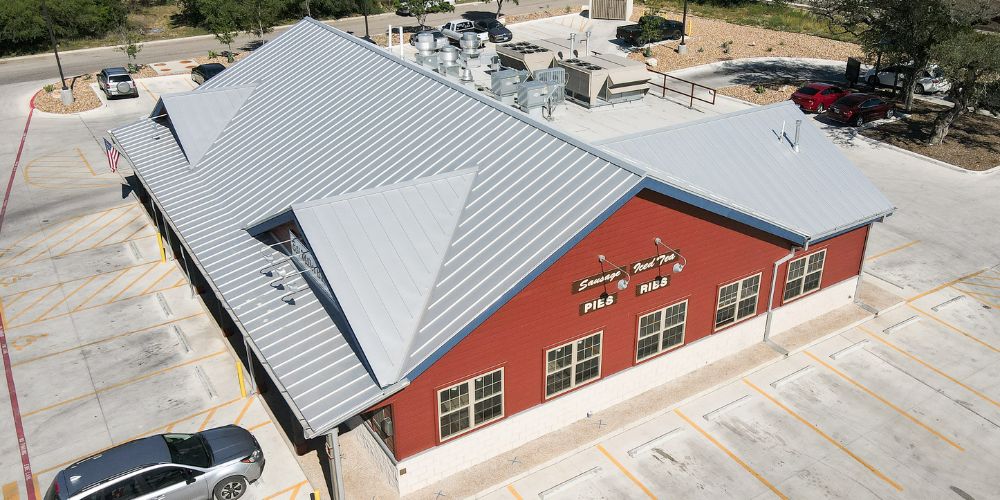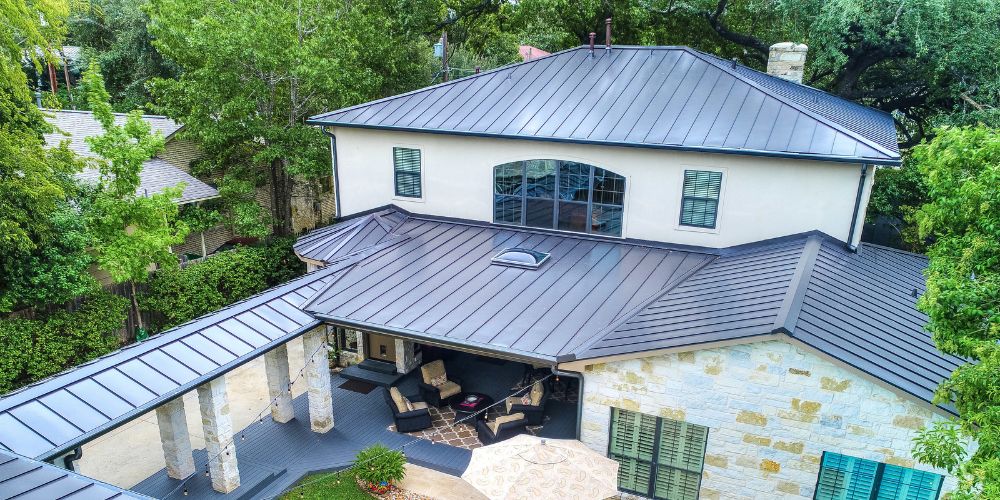Roofing tar is an elastic substance used to repair and protect various roofs. This article outlines the basics of roofing tar, from its origin to the different types, and through its advantages and disadvantages. Be it a minor crack or if you want to give a long-lasting seal, roofing tar can be one of the practical solutions.
We will also provide a step-by-step method to effectively use it and give an overview of some standard roofing tar products and their specific usage.
What is Roofing Tar

Roofing tar is a thick, black viscous substance applied in roofing to protect the roofs from damage in bad weather conditions like heavy rainfall, Snowfall, and the sun’s intense heat. They are either manufactured from petroleum by-products or naturally from pine tar, roofing tar is thick and dense so that it may fill cracks, seal joints, and provide a water-resistant barrier that is solid and waterproof. It is usually applied to flat and low-sloped roofs because of its adhesive properties, which serve perfectly in not having leaks and ensuring that the roof will last longer.
With thick layers, roofing tar forms a sound, watertight coating that resists temperature fluctuations and other environmental stresses. It bonds well with different roofing materials, such as asphalt and gravel, making it popular in repairs and reinforcements. However effective as it is, roofing tar must be applied cautiously because of its solid fumes and possible curing time for the best results.
Origin of Roofing Tar
Tar roofing is a byproduct of ancient civilizations dating back several thousand years. Early uses of tar can be traced to Mesopotamia and Egypt, where natural forms of bitumen-substances similar to the roofing tar used today were used to waterproof structures and boats and even to mummify bodies. Ancient builders knew tar could form a waterproof barrier, making it a precious material in areas with extreme weather or heavy rainfall.
Tar roofing became widely used in Europe and North America during the Industrial Revolution when there was a rising need for durable and resistant-to-weather materials. By-products from the coal and petroleum industries made rich sources of bitumen, which were then processed, refined, and manufactured for use on buildings. In modern construction, roofing tar remains a generally used material because of its strength and economic value.
Types of Roofing Tar
- Coal Tar Pitch: Coal tar pitch is a roofing tar manufactured from coal. It’s very durable and resistant to water and chemicals. Because it is highly waterproof, it is applied for low-slope/flat roofs. Usually, coal tar pitch is used together with gravel or other substances to enhance stability and protect the sun from the surface of the underlying roof.
- Asphalt Tar: Asphalt tar is among the standard roofing materials used in residential and commercial buildings, manufactured from petroleum by-products. The material is very inexpensive and easy to apply; therefore, it is highly recommended for reinforcing the seams of roofs, filling minor cracks, and forming a waterproof seal over different roofing surfaces.
- Rubberized Tar: The tar is added with rubber polymers to enhance flexibility and resilience; hence, it is recommended for roofs usually subjected to very high or low temperatures. Rubberized tar has better adhesion and stretches and contracts with the rise and fall of temperature to avoid cracks.
Advantages & Disadvantages of Roofing Tar
- Advantages: It provides a solid, water-resistant barrier; hence, roofing tar is quite effective in preventing leakage and damage from water to the roof. The fact that it can fill up the cracks and seams further enhances its efficiency and sealant properties, particularly in flat or low-slope roofs.
- Advantages: Roofing tar, characterized by long-lasting properties, has braved inclement weather conditions, from heavy rainfall to extreme sunlight. That is why more extended protection equates to cost-effectiveness concerning roofing maintenance and repairs.
- Disadvantages: Tar creates a strong smell and fumes, especially in bulk. The fumes and smell emanating from roofing tar are hazardous to the health if one inhales them in tremendous amounts; therefore, proper ventilation and protection equipment are needed to reduce the risks of possible exposure to the smell.
Also Read: Everything You Need to Know About Roof Flashing (Guide)
How to Apply Roofing Tar
- Preparation of the Roof Surface: The roof surface should be thoroughly cleaned to remove dirt, debris, and other loose material. The surface should also be dry since water will hamper proper tar adhesion. Any cracks or damage to the area should be duly inspected, and preliminary repairs must be made if necessary.
- Primer Application if Needed: Sometimes, different roof materials need a primer to withstand the tar better. The primer allows the tar to receive a smooth and prepared surface, working best when completely dried.
- Apply Roofing Tar: Use a roofing brush or trowel to apply the tar thickly over seams, joints, and other deteriorated portions. Try working in relatively small areas for even coverage. Avoid overbuilding any one section specifically to maintain an even finish.
Common Roofing Tar Products and Their Uses
- Roof Tar Caulk is best for small cracks and minor repairs. It offers an instant solution to preventing leaks around flashing, vents, and seams. The accessible mode of application facilitates great precision around hard-to-reach areas, so it comes in handy when doing spot repairs without much labor and material.
- Roof Tar Sealant: This product is multi-purpose in constructing a solid, waterproofing barrier over larger roof areas. Applied by brush or roller, it protects by coating an area to prevent leaks and stands up well against environmental wear. It does work very nicely in flat or low-sloped roofs.
- Tar Tape: This self-adhesive tar tape is designed for patching and sealing. It bonds well with different roofing materials and quickly repairs seams and punctures, offering a convenient, flexible solution without the mess of liquid tar applications.
- Roof Tar Paper: Tar paper generally works as an underlay in roofing. Roofing with tar paper typically offers an extra waterproof layer beneath the shingles or tiles. It added insulation and reduced water seeping creating a protective barrier for the roof’s structure, making the material more necessary for layered roofing systems.
Roofing tar represents some of the most workable solutions for sealing, protecting, and prolonging the life span of your roof. By understanding the types available, the benefits involved, and the ways of application, you will be in an excellent position to make informed decisions about what repairs or maintenance your roof may need.
If you need professional help, Mangold Roofing is an excellent choice. The company has made its mark with quality roofing services and expertise in laying roofing tar solutions.
At Mangold Roofing, you can rest assured that you’re getting a strong and durable roof that will withstand wind and rain and give you peace of mind with both protection and long-term security.




